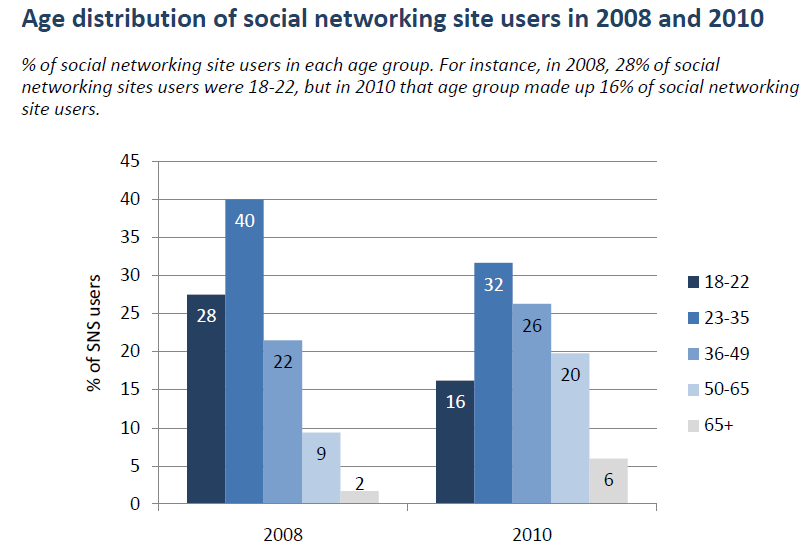The Pew Research Center’s Internet & American Life Project recently released Social Networking Sites and our Lives, which is a report based on the findings of a survey on Americans’ use of the internet conducted from October 20 to November 28, 2010 with a sample of 2,255 adults, age 18 and older who were contacted via both landline and cellular phones. The research shows: “The number of those using social networking sites has nearly doubled since 2008 and the population of SNS users has gotten older” (p.3). More specifically:
79% of American adults said they used the internet and nearly half of adults (47%), or 59% of internet users, say they use at least one of SNS. This is close to double the 26% of adults (34% of internet users) who used a SNS in 2008. Among other things, this means the average age of adult-SNS users has shifted from 33 in 2008 to 38 in 2010. Over half of all adult SNS users are now over the age of 35. Some 56% of SNS users now are female. (p.3).
So What?
Social networking has grown dramatically over the last two years. Many local congregations and religious non-profit organizations have been late adopters of social media, especially those with older constituencies. For an entity that primarily attracts adults aged 50 and better, one could argue that social media engagement was not necessary in 2008 when users in that demographic accounted for a mere 11% of the total users. However, in just two years this group grew to account for 26% of the total users. In other words, more than 1 in 4 users of social media is now at least fifty years of age.
- When did your congregation or religious non-profit initially enter the world of social networking?
- How well is your organization utilizing this resource today? What about your clergy and/or executive director and/or any executive level staff?
For those not yet engaged in social networking, Facebook may provide the most strategic entry point. Consider reading Your Church’s Facebook Page for more information. Tomorrow, I will share some of the report’s findings about Facebook users.
